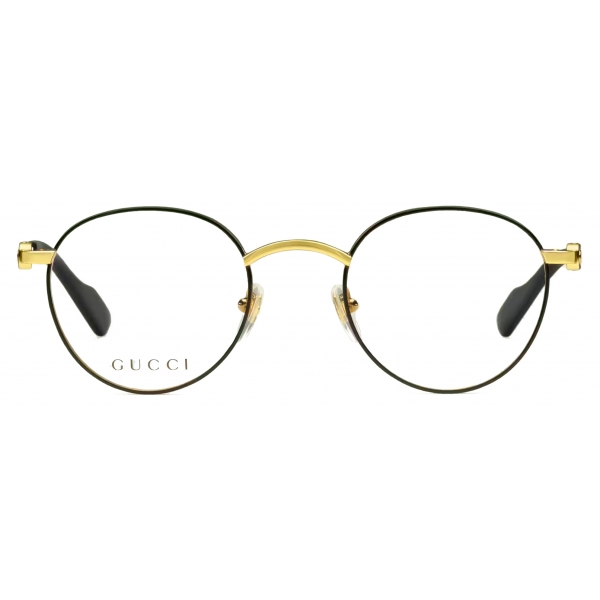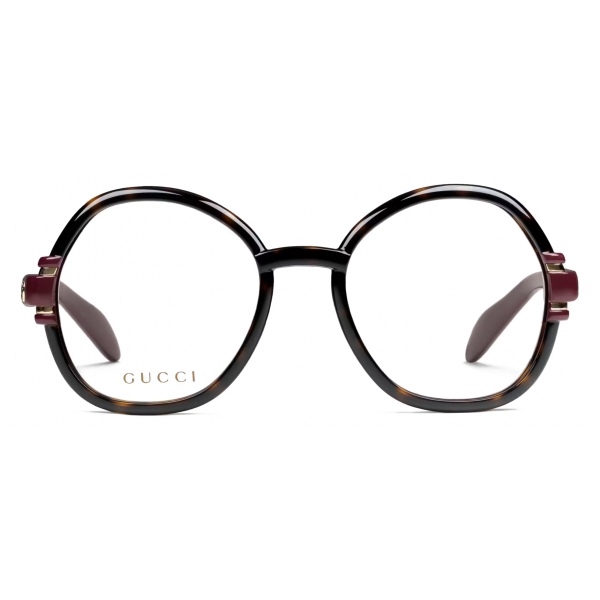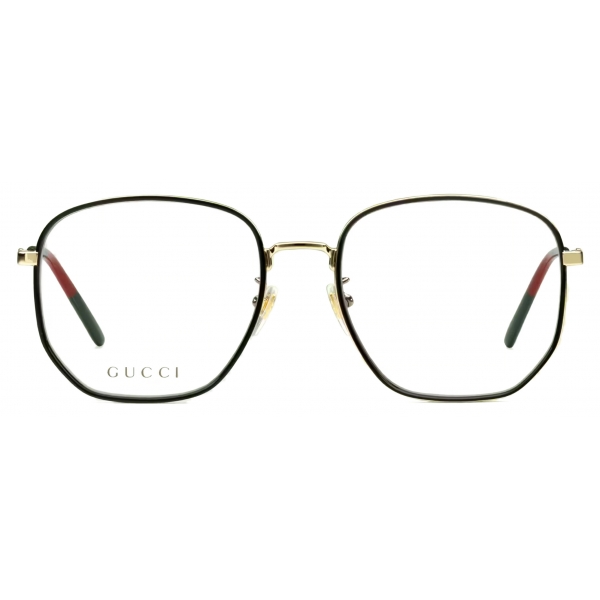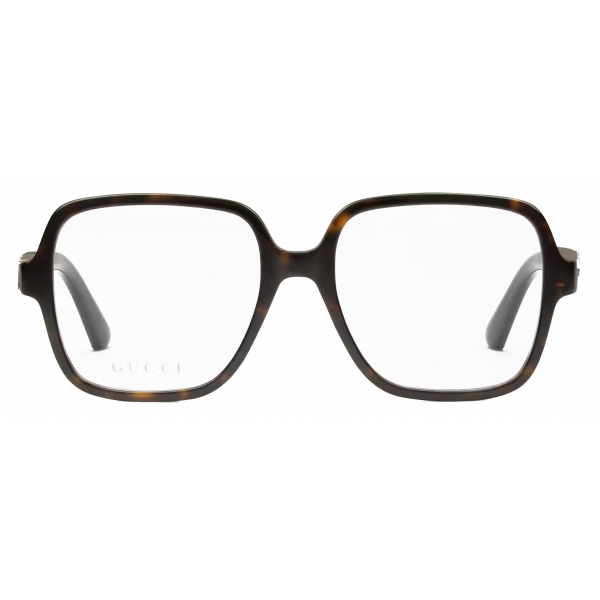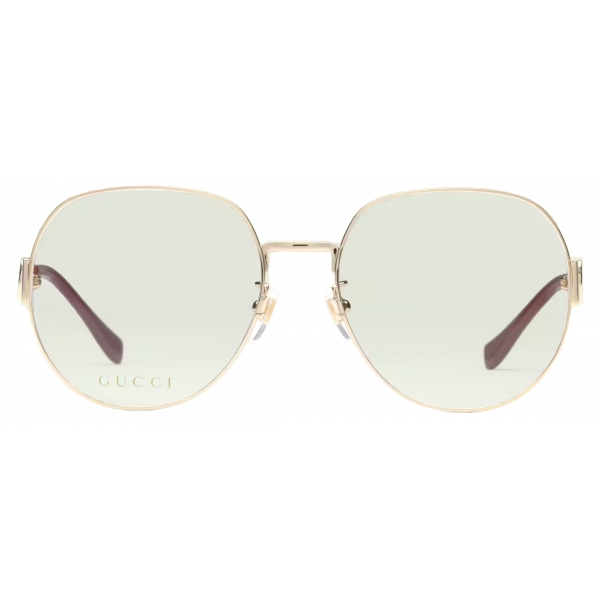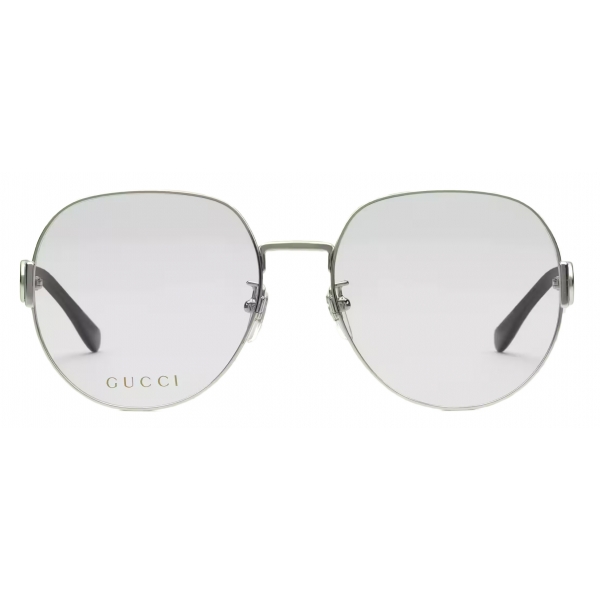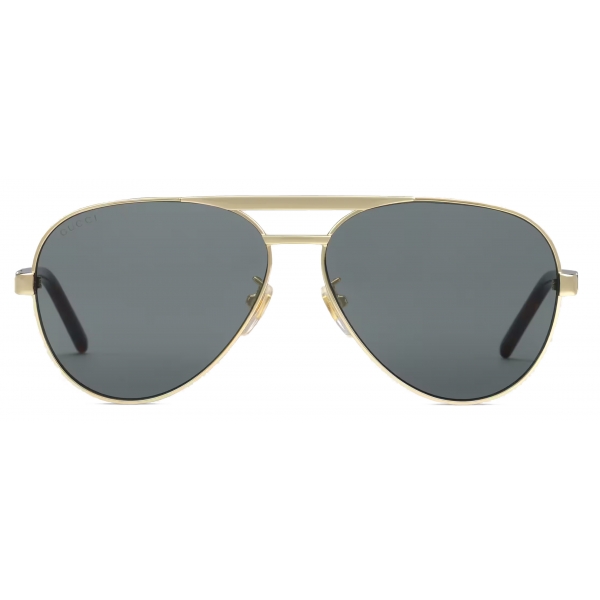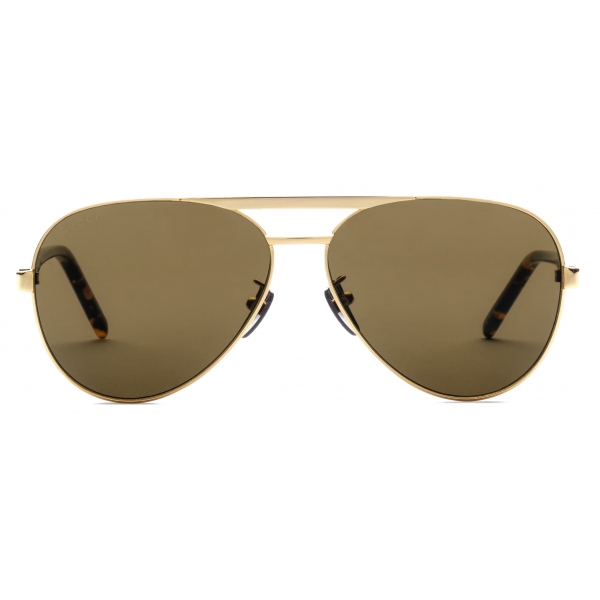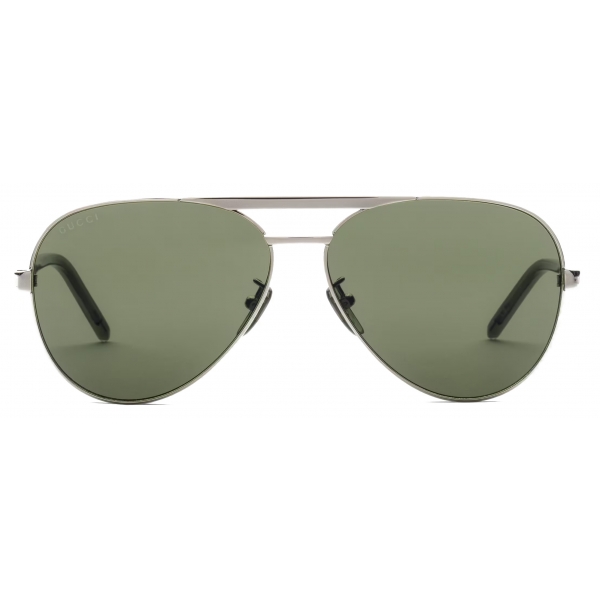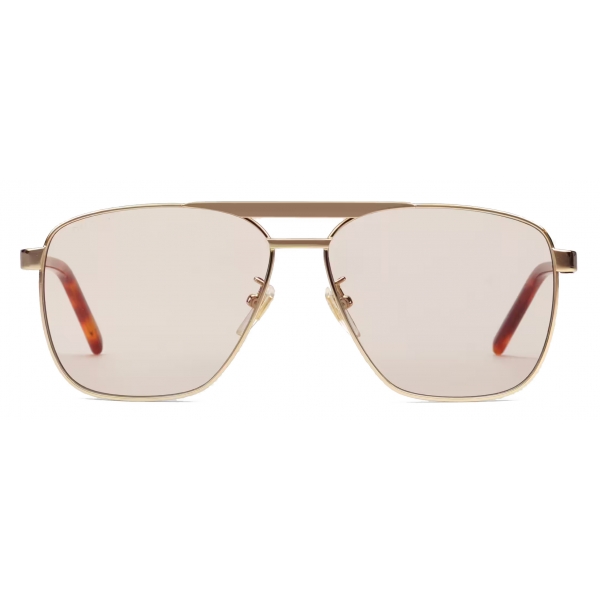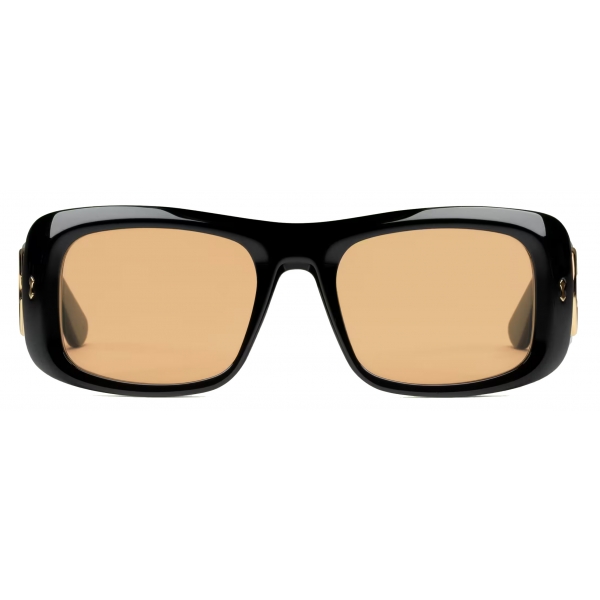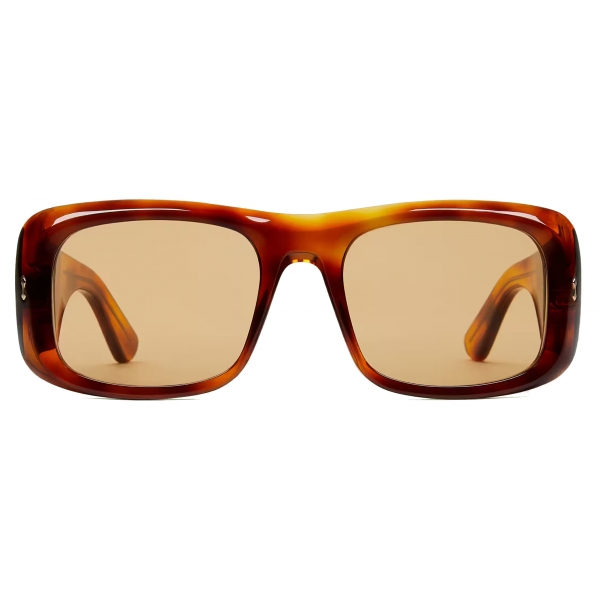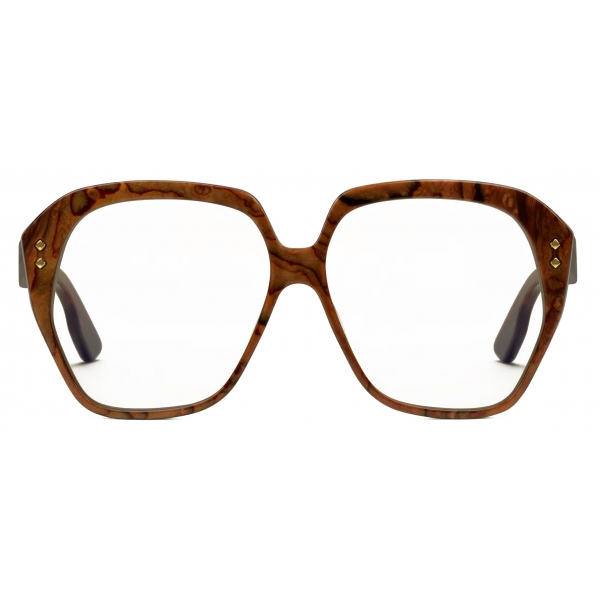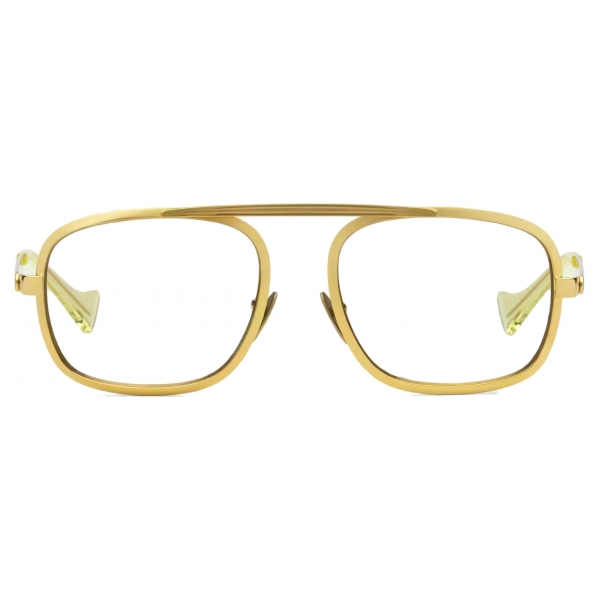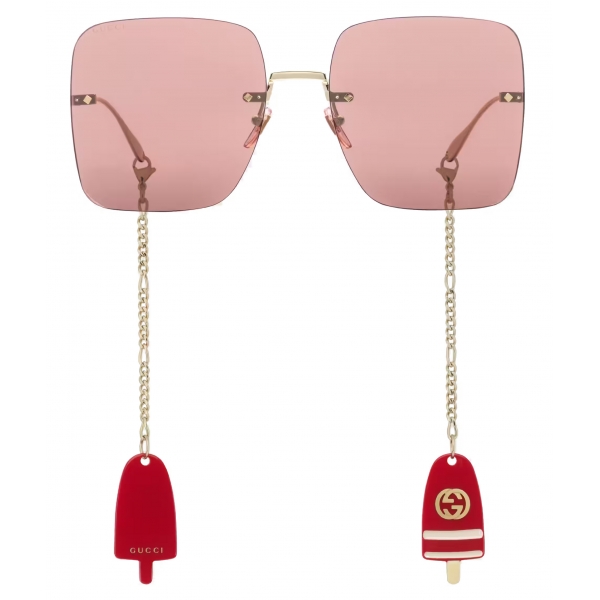No products
Categories
Extra
Gucci Eyewear
A New Definition of Luxury

History

Guccio Gucci, born in 1881, nurtured the desire to unite the skilled Italian artisans with that sophisticated and typically English vision of luxury that he had enjoyed during his employment at the Savoy Hotel in London.
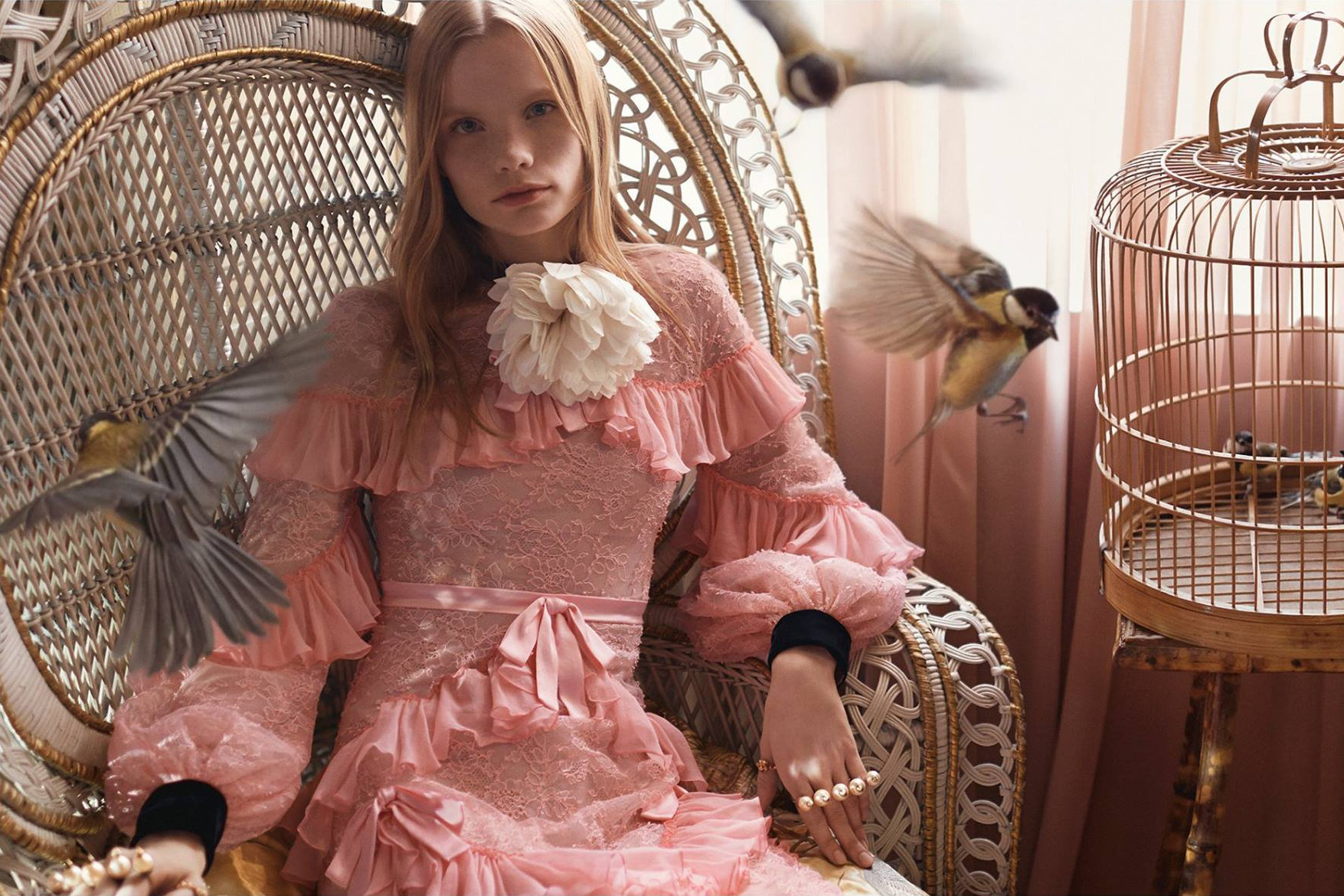
After working for the company Franzi in Milan, he founded a leather goods company in Florence in 1921 with a luggage shop.
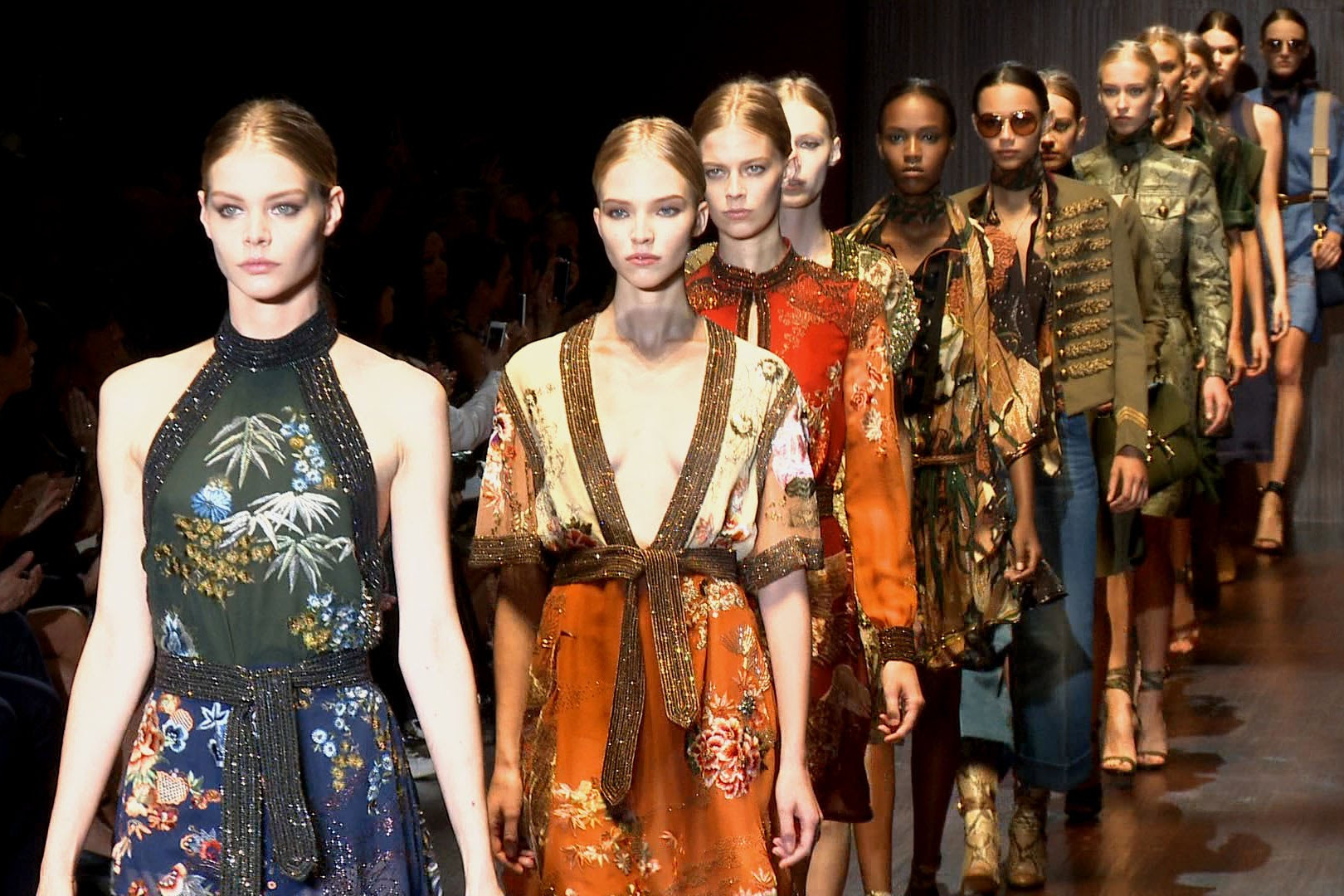
In the 30s, his gloves, belts, suitcases and trunks were the exclusive Italian souvenir, ideal for ladies of the beautiful international world.

Riding articles, from which the iconic elements of the clamp and the bracket were taken over in the 50s, represented the right mix between accuracy of details and exquisite workmanship.
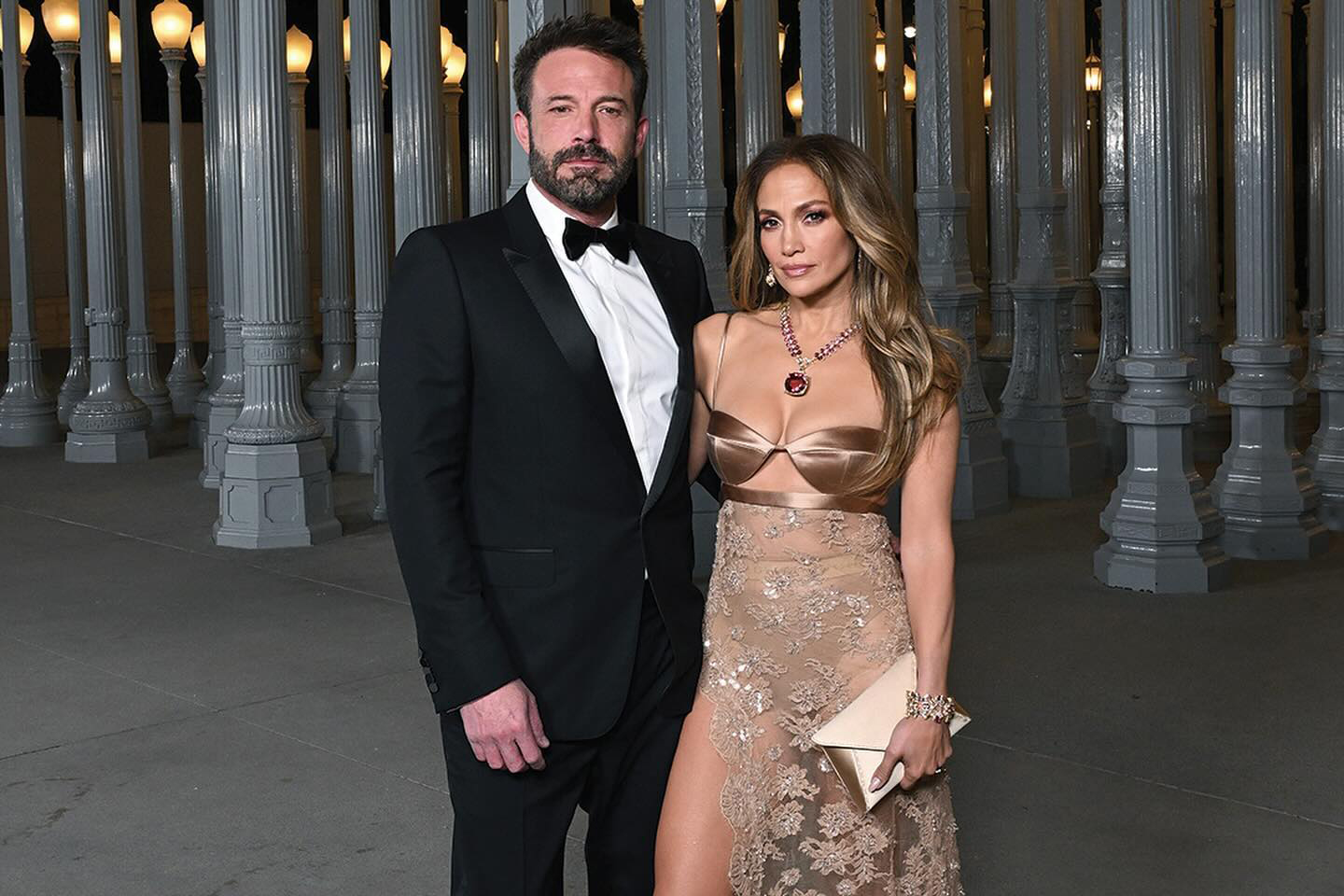
The autarchic years of the fascist dictatorship were unscathed, when the Gucci production had to fall back on hemp, on which the diamond, jute and linen motif was woven, the brand showed a strong rise, so much so that in 1938 the Roman boutique was inaugurated in Via Condotti.

In the shortage of post-war materials, in 1947 an iconic bag was created for Gucci, the Bamboo, with the handle of the same material, dark and folded, with the same closure.
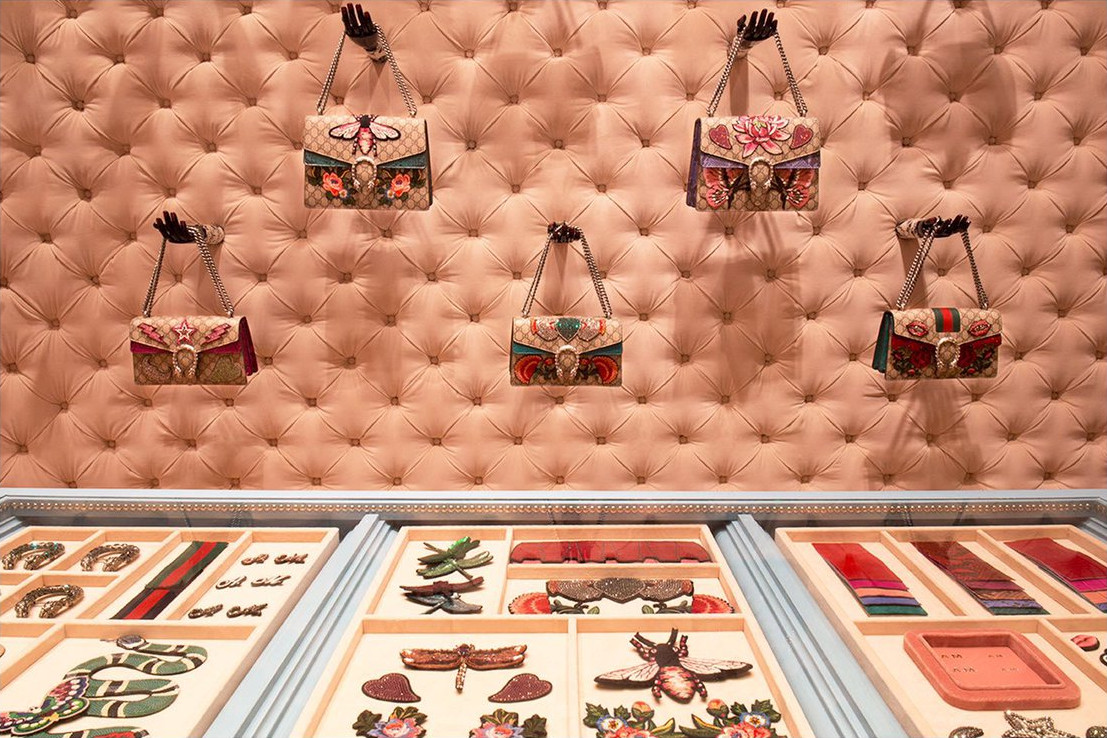
Meanwhile, the brand had become synonymous with luxury and quality, the label was successful overseas, when in addition to Milan was opened the first store in New York.
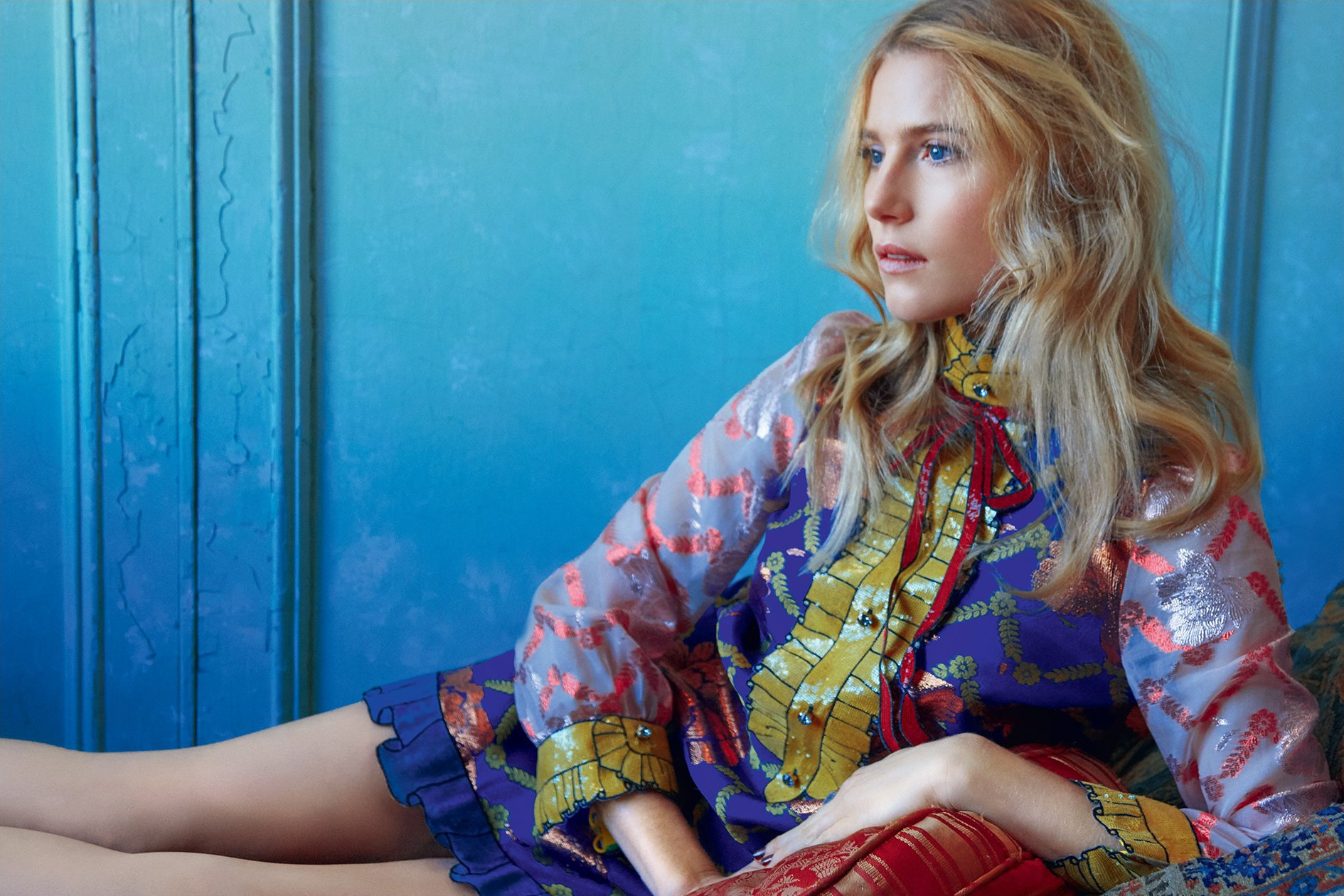
In the same period, the Fifties, the green-red-green striped texture was elaborated and, subsequently, also blue-red-blue, in cotton or wool, inspired by the flank billet of the saddles.
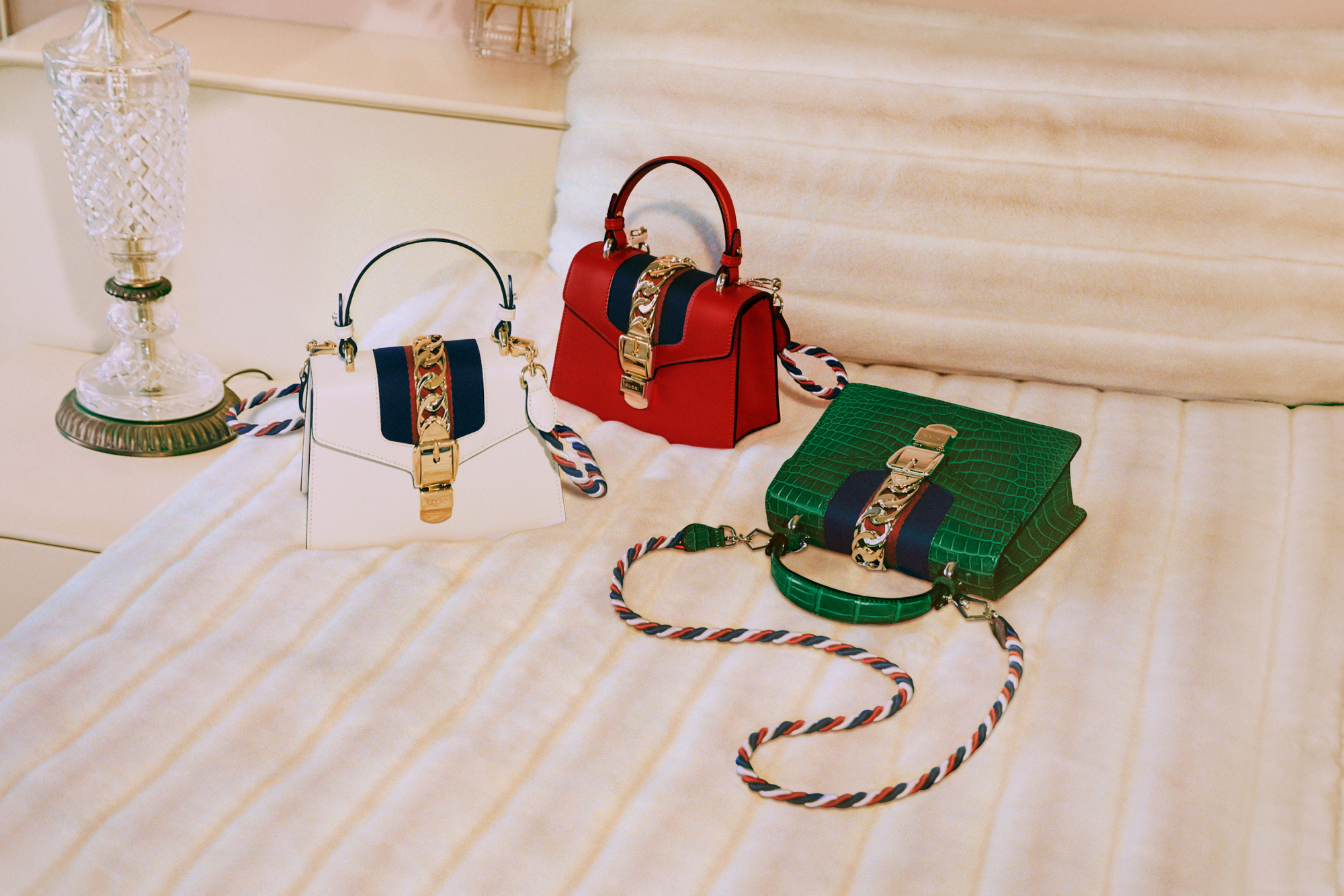
After the death of the founder in 1953, the reins of the brand passed to his sons Aldo, Vasco, Ugo and Rodolfo who contributed intensely to the development of the fashion house. Gucci boutiques were growing all over the world: London, Palm Beach, Paris and Beverly Hills, then Chicago and the East from the 70s.

That combination of the international jet set world and the maison began, which would have decreed some Gucci accessories as icons of our times.

Jackie Kennedy used to use a model of a shoulder bag with a clasp closure and a central weft, since then better known as "Jackie O".

Audrey Hepburn, Maria Callas and the Duchess of Windsor wore Gucci products, while Elisabeth Taylor or Samuel Beckett preferred the unisex "Hobo" bag.

It belongs to the mid-1960s the iconic symbol of the two crossed Gs, used to close the bags and then, in monogram, on a cotton canvas called GG Canvas. In the 70s the development of prêt-à-porter took place, favored by the opening of a large factory in Scandicci.
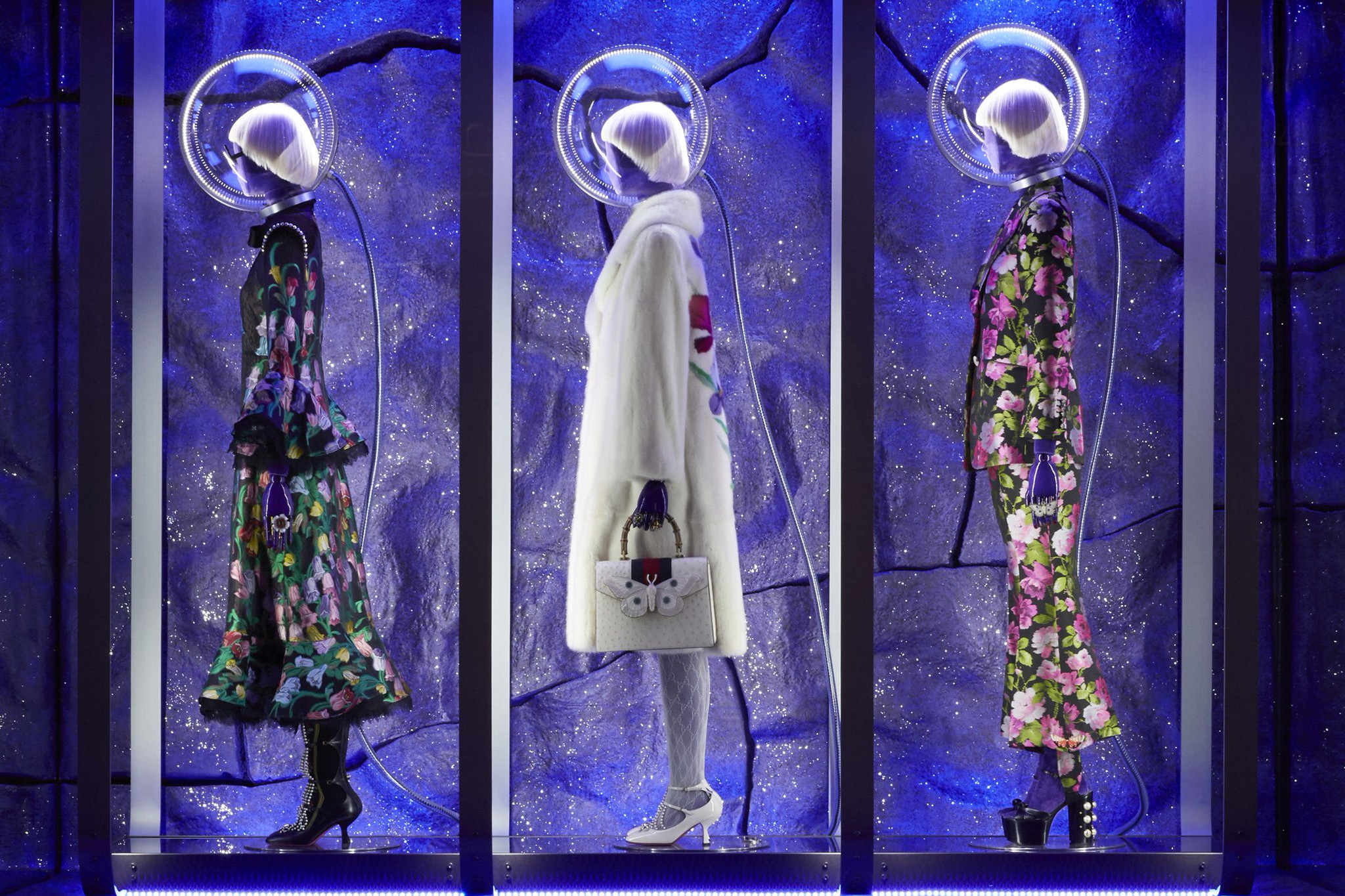
Silk shirts on which the two G logo was printed or with red and blue Gucci motif crossed with horsebit. While jackets with logo buttons or precious reptile overcoats were the must have of the fashion house.
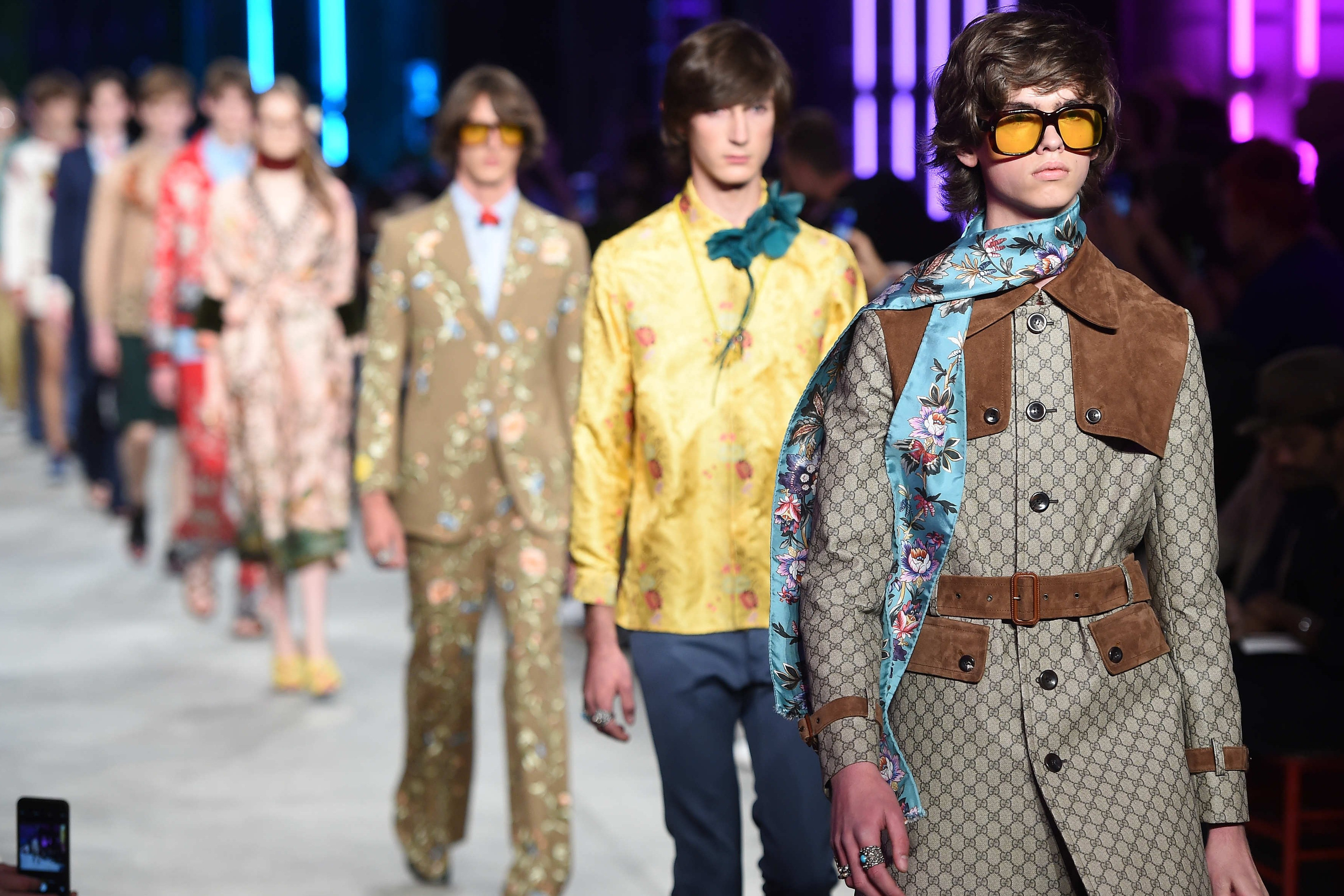
In 1981 Gucci staged his first fashion show in Florence, and the year after the house was handed over to Maurizio, Rodolfo's son. Meanwhile, another cult piece, the moccasin with the clamp, the classic loafer, was added to the permanent collection of the Costume Institute of the Metropolitan Museum in New York.
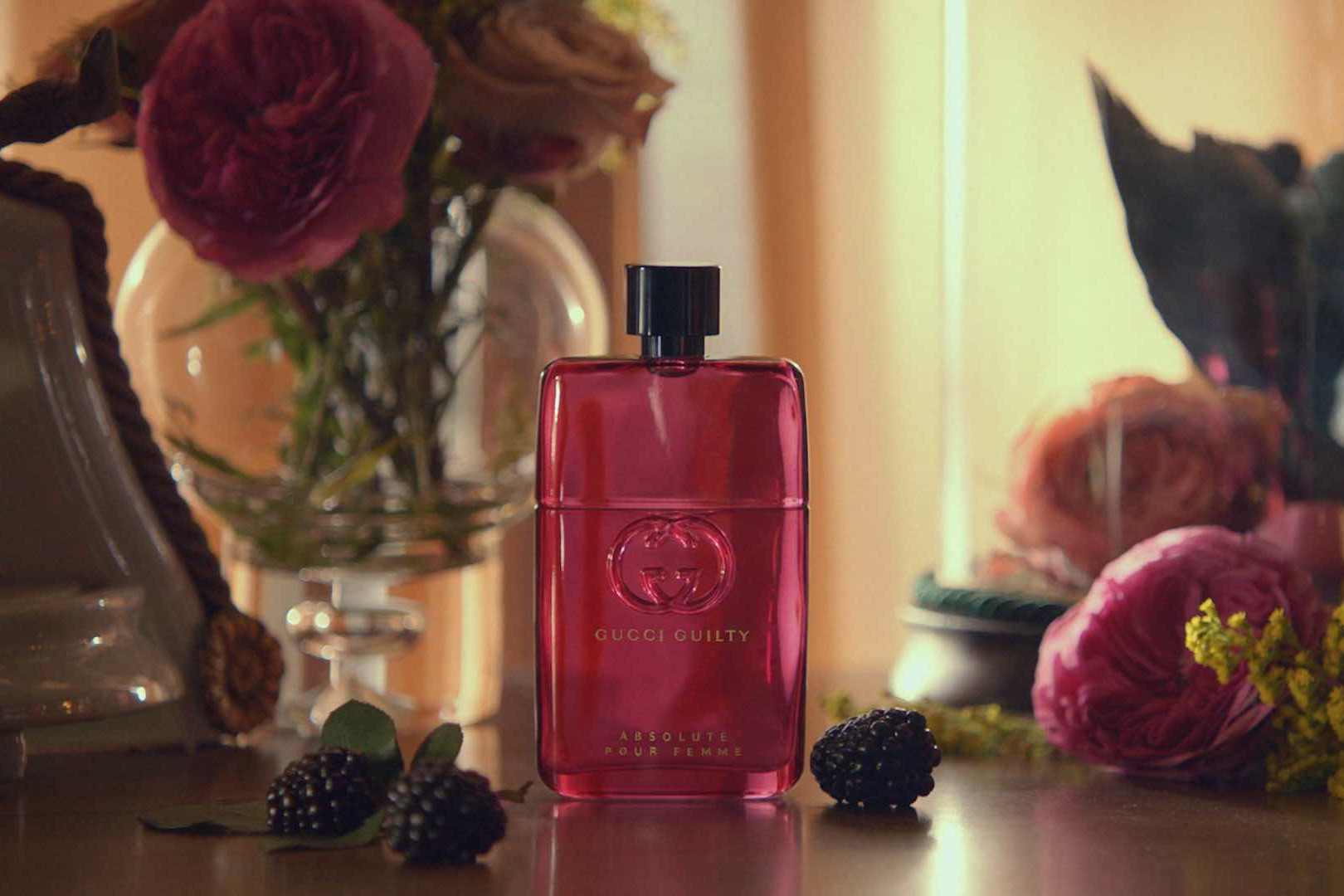
After the transfer in 1993 of his shareholding to the Anglo-Arab company Investcorp, Maurizio exits the company which, after being listed on the stock market in 1995, is rewarded for his performances as the best European company in 1998.
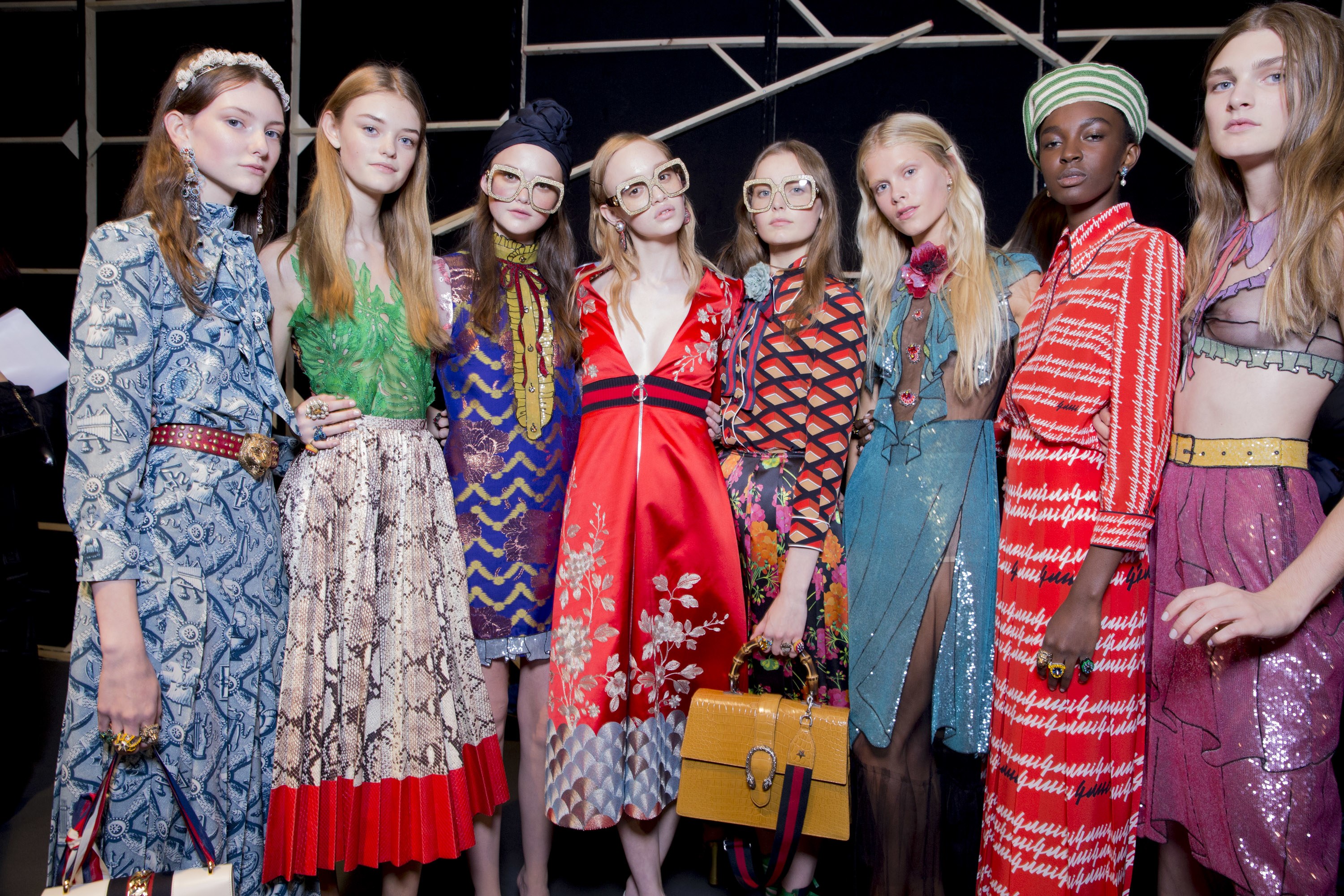
In the second half of the Nineties, the luster of the label was rediscovered thanks to the duo Domenico De Sole - Tom Ford. The former, managing director since 1995, the second became creative director of Gucci in 1994, after taking care of the women's line.

For the next ten years, he built into the company’s traditional image a provocative and bold style that immediately echoed throughout the world of fashion. Pointed heels and low-cut dresses in jersey with metal detailing instantly became the symbol of Tom Ford’s seductive and glamorous vision.
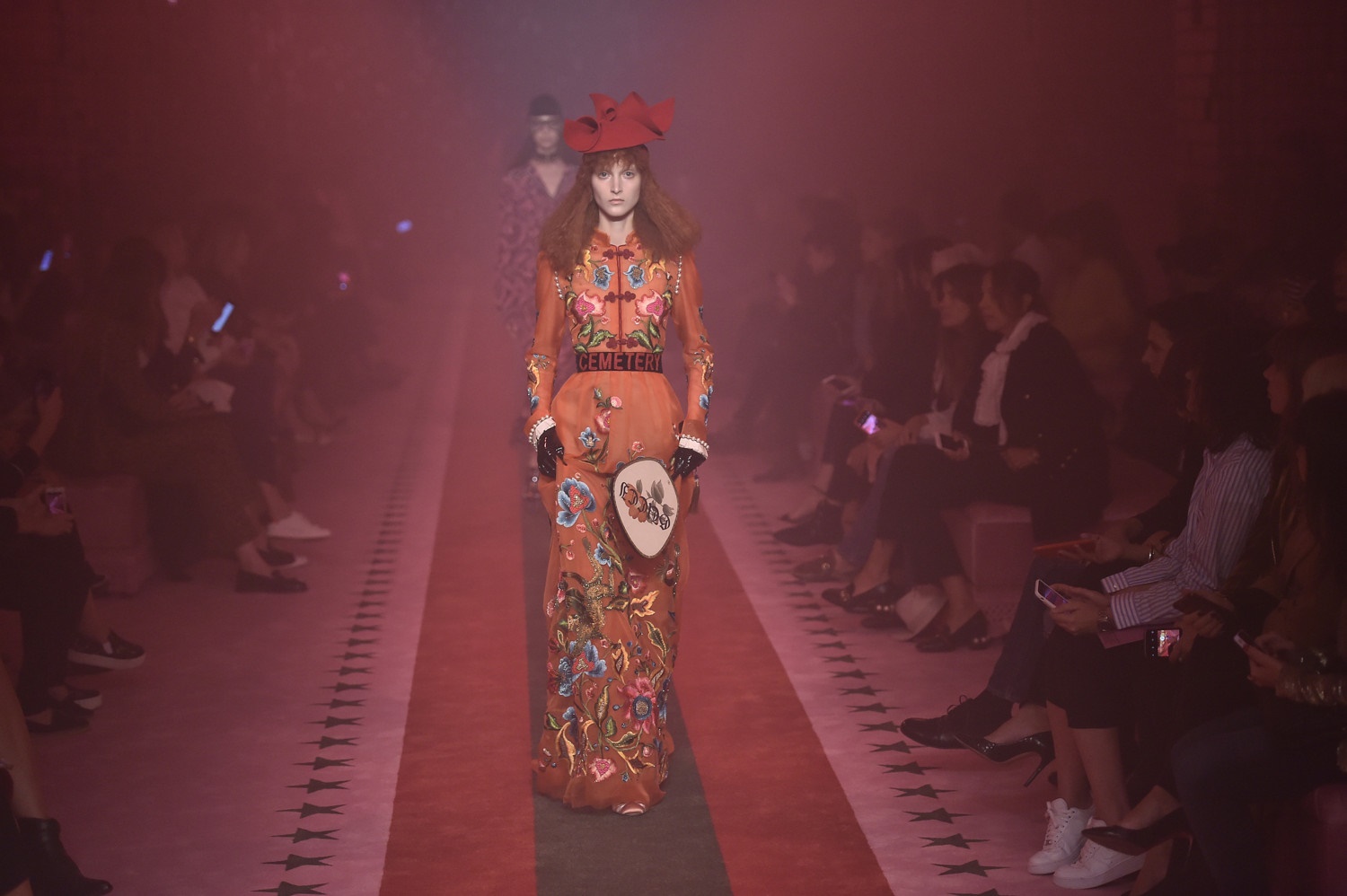
After Tom Ford’s departure from the fashion house in 2004, former director of the brand’s accessory line Frida Giannini was promoted to the company’s sole creative director in 2006.
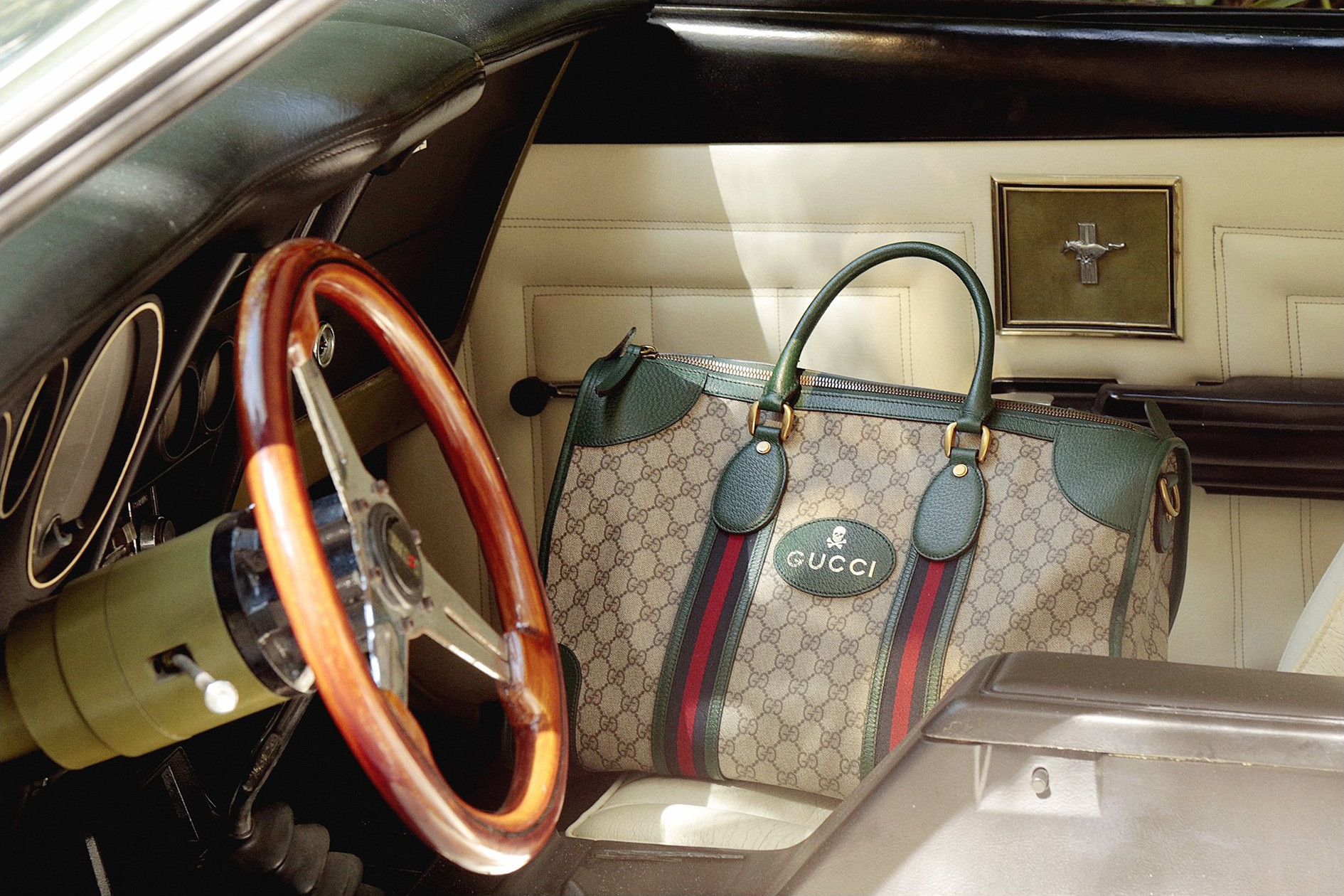
The designer reinterpreted the heritage that her predecessors established creating a fusion of past and present, of history and modernity.
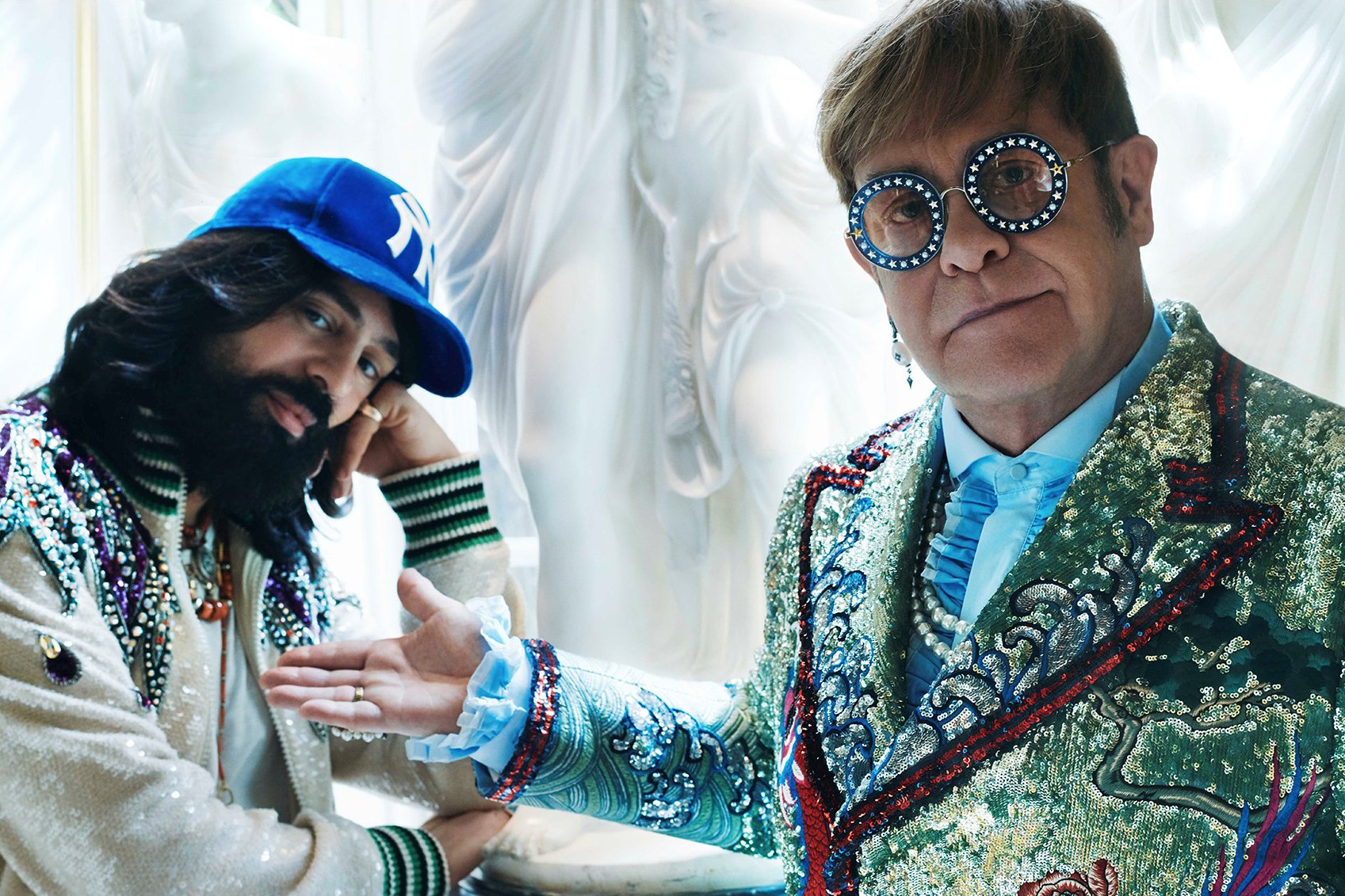
Influential, innovative and progressive, Gucci is reinventing a wholly modern approach to fashion.

Under the new vision of creative director Alessandro Michele, the House has redefined luxury for the 21st century, further reinforcing its position as one of the world’s most desirable fashion houses.
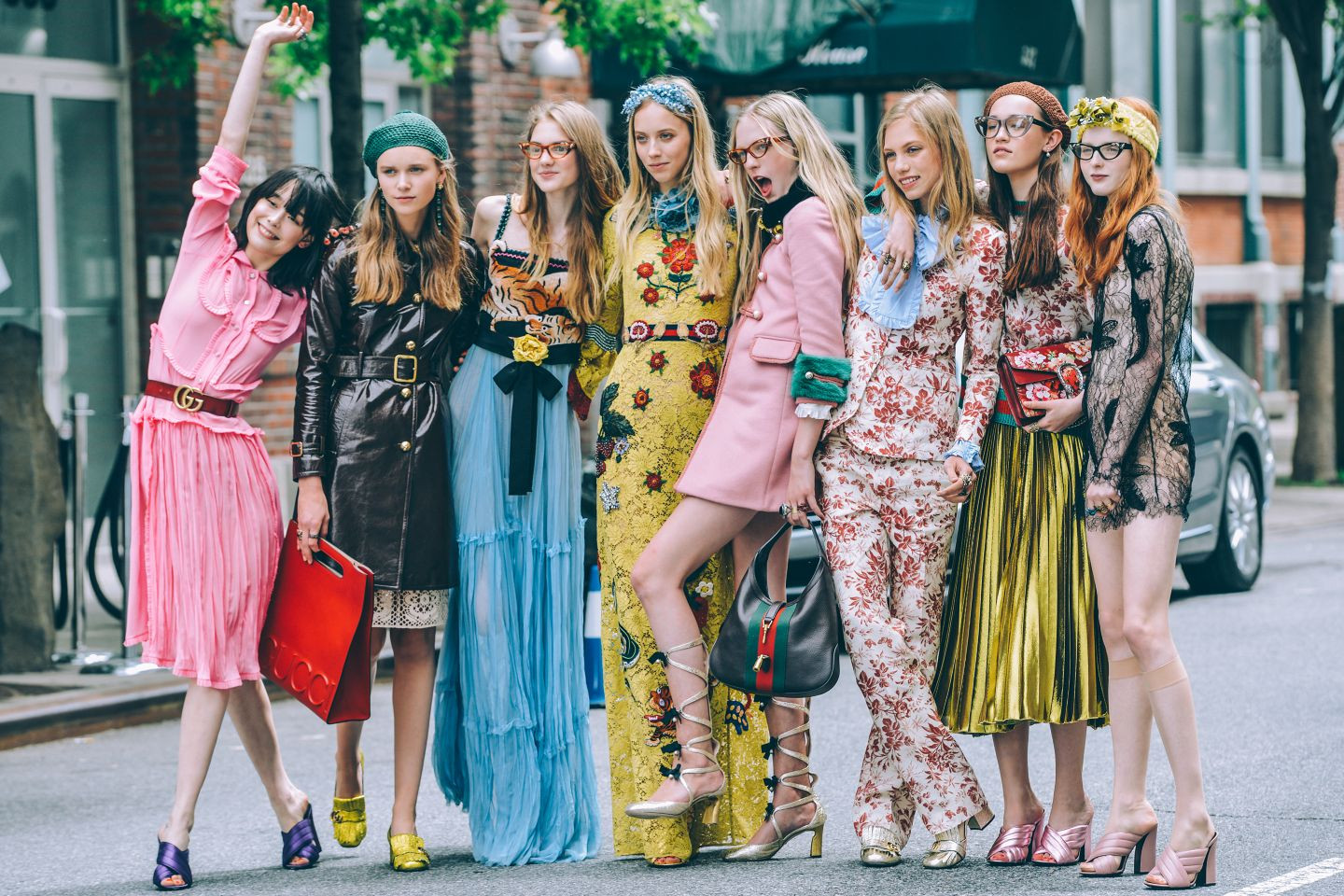
Eclectic, contemporary, romantic, Gucci products represent the pinnacle of Italian craftsmanship and are unsurpassed for their quality and attention to detail.
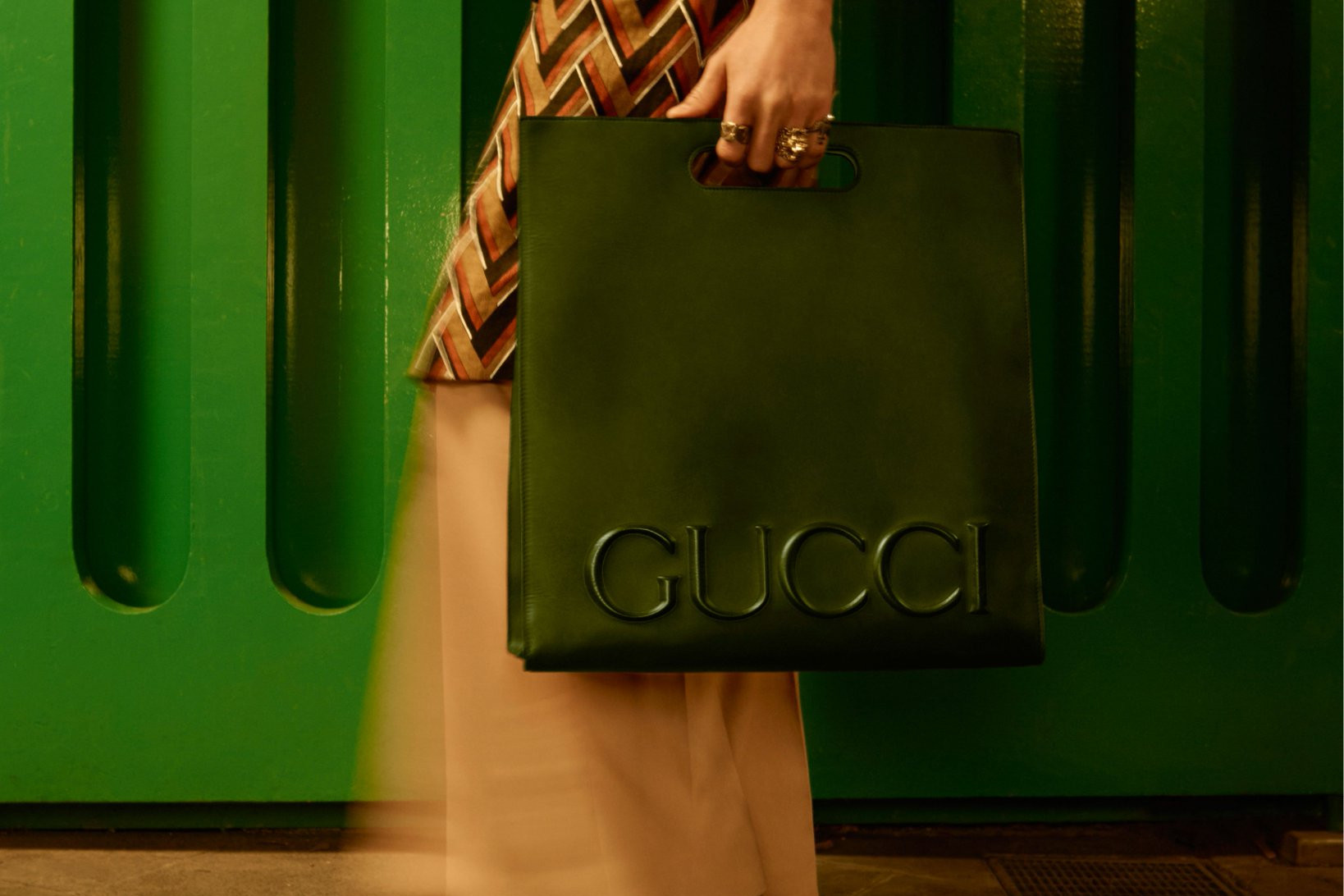
Products Gucci Eyewear
Products Gucci
Gucci Eyewear
A New Definition of Luxury

History

Guccio Gucci, born in 1881, nurtured the desire to unite the skilled Italian artisans with that sophisticated and typically English vision of luxury that he had enjoyed during his employment at the Savoy Hotel in London.

After working for the company Franzi in Milan, he founded a leather goods company in Florence in 1921 with a luggage shop.

In the 30s, his gloves, belts, suitcases and trunks were the exclusive Italian souvenir, ideal for ladies of the beautiful international world.

Riding articles, from which the iconic elements of the clamp and the bracket were taken over in the 50s, represented the right mix between accuracy of details and exquisite workmanship.

The autarchic years of the fascist dictatorship were unscathed, when the Gucci production had to fall back on hemp, on which the diamond, jute and linen motif was woven, the brand showed a strong rise, so much so that in 1938 the Roman boutique was inaugurated in Via Condotti.

In the shortage of post-war materials, in 1947 an iconic bag was created for Gucci, the Bamboo, with the handle of the same material, dark and folded, with the same closure.

Meanwhile, the brand had become synonymous with luxury and quality, the label was successful overseas, when in addition to Milan was opened the first store in New York.

In the same period, the Fifties, the green-red-green striped texture was elaborated and, subsequently, also blue-red-blue, in cotton or wool, inspired by the flank billet of the saddles.

After the death of the founder in 1953, the reins of the brand passed to his sons Aldo, Vasco, Ugo and Rodolfo who contributed intensely to the development of the fashion house. Gucci boutiques were growing all over the world: London, Palm Beach, Paris and Beverly Hills, then Chicago and the East from the 70s.

That combination of the international jet set world and the maison began, which would have decreed some Gucci accessories as icons of our times.

Jackie Kennedy used to use a model of a shoulder bag with a clasp closure and a central weft, since then better known as "Jackie O".

Audrey Hepburn, Maria Callas and the Duchess of Windsor wore Gucci products, while Elisabeth Taylor or Samuel Beckett preferred the unisex "Hobo" bag.

It belongs to the mid-1960s the iconic symbol of the two crossed Gs, used to close the bags and then, in monogram, on a cotton canvas called GG Canvas. In the 70s the development of prêt-à-porter took place, favored by the opening of a large factory in Scandicci.

Silk shirts on which the two G logo was printed or with red and blue Gucci motif crossed with horsebit. While jackets with logo buttons or precious reptile overcoats were the must have of the fashion house.

In 1981 Gucci staged his first fashion show in Florence, and the year after the house was handed over to Maurizio, Rodolfo's son. Meanwhile, another cult piece, the moccasin with the clamp, the classic loafer, was added to the permanent collection of the Costume Institute of the Metropolitan Museum in New York.

After the transfer in 1993 of his shareholding to the Anglo-Arab company Investcorp, Maurizio exits the company which, after being listed on the stock market in 1995, is rewarded for his performances as the best European company in 1998.

In the second half of the Nineties, the luster of the label was rediscovered thanks to the duo Domenico De Sole - Tom Ford. The former, managing director since 1995, the second became creative director of Gucci in 1994, after taking care of the women's line.

For the next ten years, he built into the company’s traditional image a provocative and bold style that immediately echoed throughout the world of fashion. Pointed heels and low-cut dresses in jersey with metal detailing instantly became the symbol of Tom Ford’s seductive and glamorous vision.

After Tom Ford’s departure from the fashion house in 2004, former director of the brand’s accessory line Frida Giannini was promoted to the company’s sole creative director in 2006.

The designer reinterpreted the heritage that her predecessors established creating a fusion of past and present, of history and modernity.

Influential, innovative and progressive, Gucci is reinventing a wholly modern approach to fashion.

Under the new vision of creative director Alessandro Michele, the House has redefined luxury for the 21st century, further reinforcing its position as one of the world’s most desirable fashion houses.

Eclectic, contemporary, romantic, Gucci products represent the pinnacle of Italian craftsmanship and are unsurpassed for their quality and attention to detail.

Products Gucci Eyewear
Products Gucci
-
Gucci - Round Frame Optical Glasses - Gold Black - Gucci Eyewear
Buy Gucci glasses here. With a range of eyewear and sunglasses in Rectangular and Rectangular frames, elegant cat eyes or the classic aviator style.
306,00 € 360,00 € -15%Reduced price ! -
Gucci - Oval Frame Optical Glasses - Tortoiseshell Brown - Gucci Eyewear
Buy Gucci glasses here. With a range of eyewear and sunglasses in Rectangular and Rectangular frames, elegant cat eyes or the classic aviator style.
238,00 € 280,00 € -15%Reduced price ! -
Gucci - Specialized Fit Square Frame Optical Glasses - Gold - Gucci Eyewear
Buy Gucci glasses here. With a range of eyewear and sunglasses in Rectangular and Rectangular frames, elegant cat eyes or the classic aviator style.
297,50 € 350,00 € -15%Reduced price ! -
Gucci - Square Frame Optical Glasses - Black - Gucci Eyewear
Buy Gucci glasses here. With a range of eyewear and sunglasses in Rectangular and Rectangular frames, elegant cat eyes or the classic aviator style.
340,00 € 400,00 € -15%Reduced price ! -
Gucci - Square Frame Optical Glasses - Black - Gucci Eyewear
Buy Gucci glasses here. With a range of eyewear and sunglasses in Rectangular and Rectangular frames, elegant cat eyes or the classic aviator style.
289,00 € 340,00 € -15%Reduced price ! -
Gucci - Square Frame Optical Glasses - Tortoiseshell - Gucci Eyewear
Buy Gucci glasses here. With a range of eyewear and sunglasses in Rectangular and Rectangular frames, elegant cat eyes or the classic aviator style.
289,00 € 340,00 € -15%Reduced price ! -
Gucci - Square Frame Optical Glasses - Gold - Gucci Eyewear
Buy Gucci glasses here. With a range of eyewear and sunglasses in Rectangular and Rectangular frames, elegant cat eyes or the classic aviator style.
306,00 € 360,00 € -15%Reduced price ! -
Gucci - Square Frame Optical Glasses - Silver - Gucci Eyewear
Buy Gucci glasses here. With a range of eyewear and sunglasses in Rectangular and Rectangular frames, elegant cat eyes or the classic aviator style.
306,00 € 360,00 € -15%Reduced price ! -
vaGucci - Navigator-Frame Sunglasses - Tortoiseshell - Gucci Eyewear
The Gucci Love Parade runway was a spectacle of glamorous and playful design that extended into the world of eyewear. Frames with unique structures and distinctive detailing accompanied key looks, such as this pair of tortoiseshell acetate navigator frames. This item is part of Gucci’s MX, a selection that embraces freedom of expression and explores...
204,00 € 240,00 € -15%Reduced price ! -
Gucci - Aviator-Frame Sunglasses - Gold Grey - Gucci Eyewear
Presented in an elegant combination of gold-toned metal and dark tortoiseshell acetate, these aviator-frame sunglasses add a refined touch to the everyday. Gucci lettering appears on the temples as an engraved detail, further enhancing this accessory's sophisticated design.
255,00 € 300,00 € -15%Reduced price ! -
Gucci - Aviator-Frame Sunglasses - Yellow Gold Brown - Gucci Eyewear
Presented in an elegant combination of gold-toned metal and black tortoiseshell acetate, these aviator-frame sunglasses add a refined touch to the everyday. Gucci lettering appears on the temples as an engraved detail, further enhancing this accessory's sophisticated design.
255,00 € 300,00 € -15%Reduced price ! -
Gucci - Aviator-Frame Sunglasses - Silver Dark Grey - Gucci Eyewear
Presented in an elegant combination of silver-toned metal and transparent grey acetate, these aviator-frame sunglasses add a refined touch to the everyday. Gucci lettering appears on the temples as an engraved detail, further enhancing this accessory's sophisticated design.
255,00 € 300,00 € -15%Reduced price ! -
Gucci - Navigator-Frame Sunglasses - Gold Yellow - Gucci Eyewear
These navigator-frame sunglasses combine retro and contemporary influences. A gold-toned metal frame imbues a vintage feel, while the contrasting tortoiseshell temples complete the design with a modern sensibility. Gucci lettering appears as an engraved detail on the side—a subtle nod to the House.
255,00 € 300,00 € -15%Reduced price ! -
Gucci - Rectangular-Frame Sunglasses - Black - Gucci Eyewear
These narrow, rectangular-frame, sunglasses recall the silhouette of one of the '90s most popular styles. Crafted from black injection, the construction features a gold-tone metal joint and wide temples with the name of the House appearing as a subtle detail.
195,50 € 230,00 € -15%Reduced price ! -
Gucci - Rectangular-Frame Sunglasses - Ivory - Gucci Eyewear
These narrow, rectangular-frame, sunglasses recall the silhouette of one of the '90s most popular styles. Crafted from ivory injection, the construction features a gold-tone metal joint and wide temples with the name of the House appearing as a subtle detail. A brown lens completes the design with a retro vibe.
195,50 € 230,00 € -15%Reduced price ! -
Gucci - Rectangular-Frame Sunglasses with Interlocking G - Black - Gucci Eyewear
A bold black acetate structure defines these rectangular-frame sunglasses, resulting in a modern final design. Rivet details appear on the front frame while an oversize Interlocking G logo enriches the temples.
348,50 € 410,00 € -15%Reduced price ! -
Gucci - Rectangular-Frame Sunglasses with Interlocking G - Tortoiseshell -...
A bold tortoiseshell acetate structure defines these rectangular-frame sunglasses, resulting in a modern final design. Rivet details appear on the front frame while an oversize Interlocking G logo enriches the temples.
348,50 € 410,00 € -15%Reduced price ! -
Gucci - Geometric-Frame Sunglasses - Brown - Gucci Eyewear
The Gucci Love Parade runway was a spectacle of modern and unexpected design that extended into the world of eyewear. Frames with unusual structures and logo details accompanied key looks. This geometric frame is crafted from brown acetate with Gucci lettering along the temples.
255,00 € 300,00 € -15%Reduced price ! -
Gucci - Rectangular Frame Sunglasses - Black - Gucci Eyewear
Featuring a special hinge called 'flex' to add extra flexibility to the temples, this pair of frames is inspired by Italian sunglasses from the '80s. The shiny black acetate structure is enriched by Gucci rivets on the front and a subtle logo detail on the side.
246,50 € 290,00 € -15%Reduced price ! -
Gucci - Aviator-Frame Sunglasses - Gold - Gucci Eyewear
As part of the latest collection, classic aviator styles are redesigned through the Gucci lens. A timeless yellow gold-toned metal structure mixes with a light yellow lens, resulting in a contemporary final design. This item is part of Gucci’s MX, a selection that embraces freedom of expression and explores identity norms.
306,00 € 360,00 € -15%Reduced price ! -
Gucci - Oversized Square-Frame Sunglasses - Gold Red - Gucci Eyewear
Gucci presents a pair of butterfly-shaped sunglasses with detachable elements that combine classic and contemporary influences. The removable ice-cream pendants channel the House's playful spirit, while the Interlocking G detail pays homage to Founder Guccio Gucci. A red lens completes the style with a retro vibe.
425,00 € 500,00 € -15%Reduced price !



